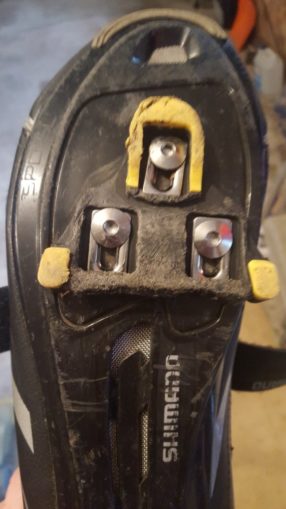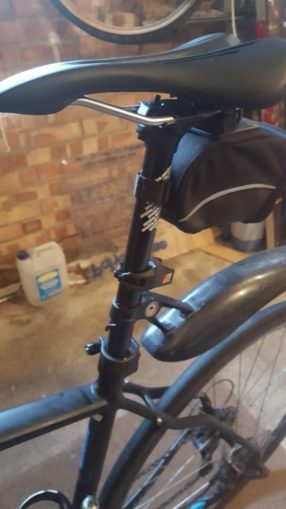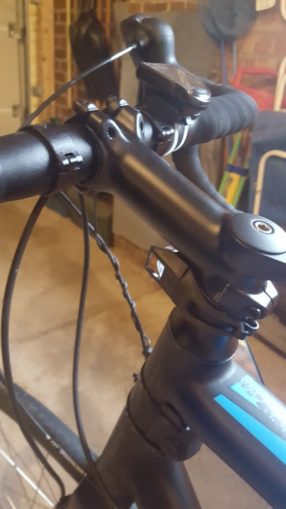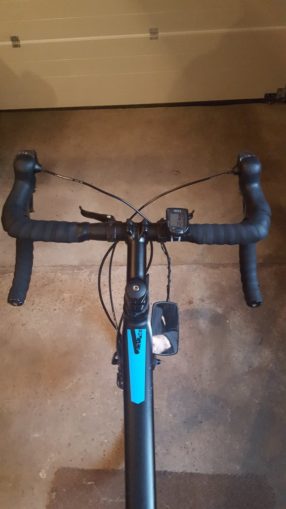Ever heard of a bike fitting?
No not a cycle having a epileptic fit, this is the process of having a bike adjusted to fit you.
I know there are a significant number of you who hate lycra louts – the middle age, generally male proponents of cycling (though this seems to be changing from what I’ve seen). It has become extremely popular in recent years, often to the detriment of other sports that used to keep the demographic busy – particularly golf. Why bother with ridiculous green fees, uniform constraints, many many rules, the bother of having to book a slot at an ungodly hour of the morning to get a go, all the while deferring to some jumped up pipsqueak known as the Chairman? If the weather is fine, just get on your bike and go for a ride, no booking, no fees, just do it.
As you get more into cycling the fitness increases as does the expense – you move beyond the £100 starter bike from Halfords and start to look at something at the sort of cost where you are going to have to lie about the price to your wife when it’s bought. Many can cost more than a small car, personally I’m not that bothered by the tech, and opted for a £750 one, that was built to be tough (a tricross – so mix of on and off road) to cater for my size/weight and the terrible roads we have. No point in some multi thousand pound carbon fibre creation then smashing it into a pothole on the first run out.
The rides get longer as you get fitter, going to that next café up the road, then a bit further until you end up doing a 30 or 40 mile ride or a lot more on a Sunday morning. All well and good, but aches and pains can start to appear. I’m doing a three day charity cycle ride shortly from Edinburgh to Newcastle – around 110 miles I think, so was getting wary of any aches and pains.
To that end I booked a bike fitting – this is where you pay an expert to help set up the bike so it fits you, not just get by with how it came out of the shop. I booked a £60 session with Dave at the Shed (www.theshed.cc). He works from home, and having visited, can see he’s not doing it for the money, but the love of the sport. We put the bike in the lean-to and he got to work – for those cyclists of you, some of these may be of use.
- Shoes – yes you wear shoes, usually clip in ones of some form, but other than that? Take a look at the insoles – the standard ones are paper thin and give no support. Compare the focus placed upon shoes against say that of running – where gait, insole, everything is checked and measured. Usually for cycling you buy on the size that fits and a colour/brand. Fit means when you stand up – but you cycle sitting down most of the time – feet relax a little without the weight so shoes that fit when standing may be too big when sitting down. Definitely look at getting some insoles, with higher than normal arches, again checked when sitting, not standing. If you are finding you get numb toes or patches on your feet after a ride, that is due to lack of support – getting insoles will spread the load of that pedalling, not just on the ball of your foot. Similarly if the front of your current insole is worn/shiny – that’s your toes clawing to get traction, perhaps the cleats are not correctly positioned.
- Cleats – very important as you’d expect, and I don’t know the majority of the science behind the adjustment other than make sure it is consistent – they should match! When you push down, does your foot twist? If so when it is coming back up on the counter rotation, the pedal will snap it back to centre position – do that thousands of times and you’re going to get ankle pain, so look to set up the cleat so you don’t twist your foot when pushing down.

- Saddle – height and angle are some of the most important adjustments to avoid back and neck pain. If the saddle is too low, you’ll find the front leg muscles next to your knees will ache, if too high, it will be the large muscles at the back of your leg – if it aches all over, that’s about right (just get a bit fitter, lardy boy). The saddle can be tipped to a comfortable angle – set it up initially to be flat, if it is too angled, you slip forwards and put too much weight on your arms, too far back and your prostate is going to hurt. The position of the saddle on the seat post can be adjusted forwards and back and is set to ensure that your centre of gravity is over the seat post – if you can rig your bike into a treadmill, try pedalling quickly under load (sprinting up a hill) while using the lower bars, and let go of the handlebars – if you fall forwards or more likely involuntarily have to shift weight, then you are too far forward and are not in balance.

- Handlebars/Saddle – if you have to reach too far forwards to get to your handlebars, your shoulders will naturally roll over inwards to make the stretch. This then bunches up your neck muscles, preventing you from raising your head – leading to neck pain after a ride. Look to move the brakes back a little or raise the bars by turning the stem upside own or have a shorter stem so you don’t have to stretch.

- If you are finding you put a lot of weight onto the handlebars through your arms, perhaps finding you have to move position every so often to get comfort, this will lead to back pain. This is usually as the bars are too low, particularly if you are tall and the saddle is high. Your arms should really only be there to work the gears, brakes and keep the bike straight. Your weight should be supported by your core muscles and legs, again the test in (3) will show if there is a problem. Turning over the stem moves it from being angled down to up, raising the bars significantly.
- Brake position – the brake/gear handles can be moved around the handlebars, to ensure they are at the right distance for you to reach. The handlebars can also be rotated to bring the brakes up and towards you if necessary. Having the brake handles moved to the right position and adjusted so they are slightly turned in rather than facing straight ahead helps reduce strain on your wrists – in the same way that you occasionally see ergonomic keyboards, it is all about keeping the wrists in their natural resting position.

Changing all these settings and more is not easy – so I do recommend going to see someone like Dave – the session took an hour and a half and was pretty intensive, he talked through the reasoning behind each element, the anatomical impact of the changes and was able to adjust things as we went along. It was money well spent. He said I should see a difference – like riding a new bike. Strava segments should improve due to having a more efficient use of the body. He did warn that for the first few trips I would be using muscle groups that had previously been underused, so will ache but that will subside – thinking of that, I should have done this a month ago, to give time to prepare for the ride.
For me he’d adjusted the saddle -which is much higher than in the past, moved the brake/gears, raised the handlebars and moved the cleats. No new parts required.
I did a test ride out on Sunday – it made a difference, the larger muscles working more than in the past. Due to the blustery wind, it was difficult to see what effect it had to speeds – and was the first time out. After 35 miles (and cake), I didn’t have any back pain or prostate worries and no significant muscular problems. The next morning was similarly without aches and the usual grumbles, so a bit of a success. We’ll see if I say the same after that charity ride!
© Text & images Sweaty Dave 2018
Audio file


